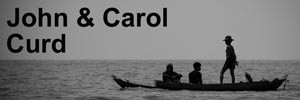I had booked a 2:10 PM return ferry from Calais which is just over two hours from Neufchatel-en-Bray so we had no rush. After a leisurely packing (in the dry) we joined the exodus from the campsite, sailed along on a stiff favourable wind, and arrived at Calais ferry port at 11:45 AM.
“We’re a tad early – strong tail winds.”
“No problem, you can get on the next sailing at 1:10 PM.”
“Excellent! Thank you.”

 Not only were we on an earlier ferry but we were first to load and were in pole position ready for the sprint to the port exit and into the manic English traffic. After an excellent lunch in Langan’s Brasserie on board, Beastie (our Honda) and Billy gamely blew off the Dutch Landrover opposition alongside on the grid and took the chequered flag at the first Dover roundabout in great style. (Apologies for the quality of the second picture – it’s a mobile phone effort.)
Not only were we on an earlier ferry but we were first to load and were in pole position ready for the sprint to the port exit and into the manic English traffic. After an excellent lunch in Langan’s Brasserie on board, Beastie (our Honda) and Billy gamely blew off the Dutch Landrover opposition alongside on the grid and took the chequered flag at the first Dover roundabout in great style. (Apologies for the quality of the second picture – it’s a mobile phone effort.)
The rain started shortly after leaving Dover and got steadily worse as we drove towards the M25. It looked like winter again. Remembering the Wimbledon final but expecting little given the current weather conditions, Carol found the appropriate radio station but we got the British F1 Grand Prix where, it seemed, Lewis Hamilton was being just as successful at taking chequered flags as we had been. It was no longer raining at Silverstone.
Then, surprisingly, on came Wimbledon which had just begun after being delayed by rain. Now it didn’t seem to be raining at Wimbledon, either. It was certainly still thrashing down not far away in Kent on the M20 where we were.
Wind-up time: long delays on the northern anticlockwise JAM25 were being signed. To avoid them, we decided to head clockwise on the southern section of the M25 passing Gatwick and Heathrow.
More signs: parts of the M40 were closed. No problem, we don’t want that.
Yet more signs: long delays northbound on the M25 immediately after the M40 exit. Oh Lord, they’ve got us both ways.
Being between a rock and a hard place, we decided to sit it out on the M25 but were pleasantly surprised to discover that the announced long delays seemed to be long gone. Relief!
More signs: long delays exiting the M25 onto the M1. Arghh! Take me back to France.
At least the rain had stopped when we got Billy back into his field for a well-earned rest.



















Recent Comments